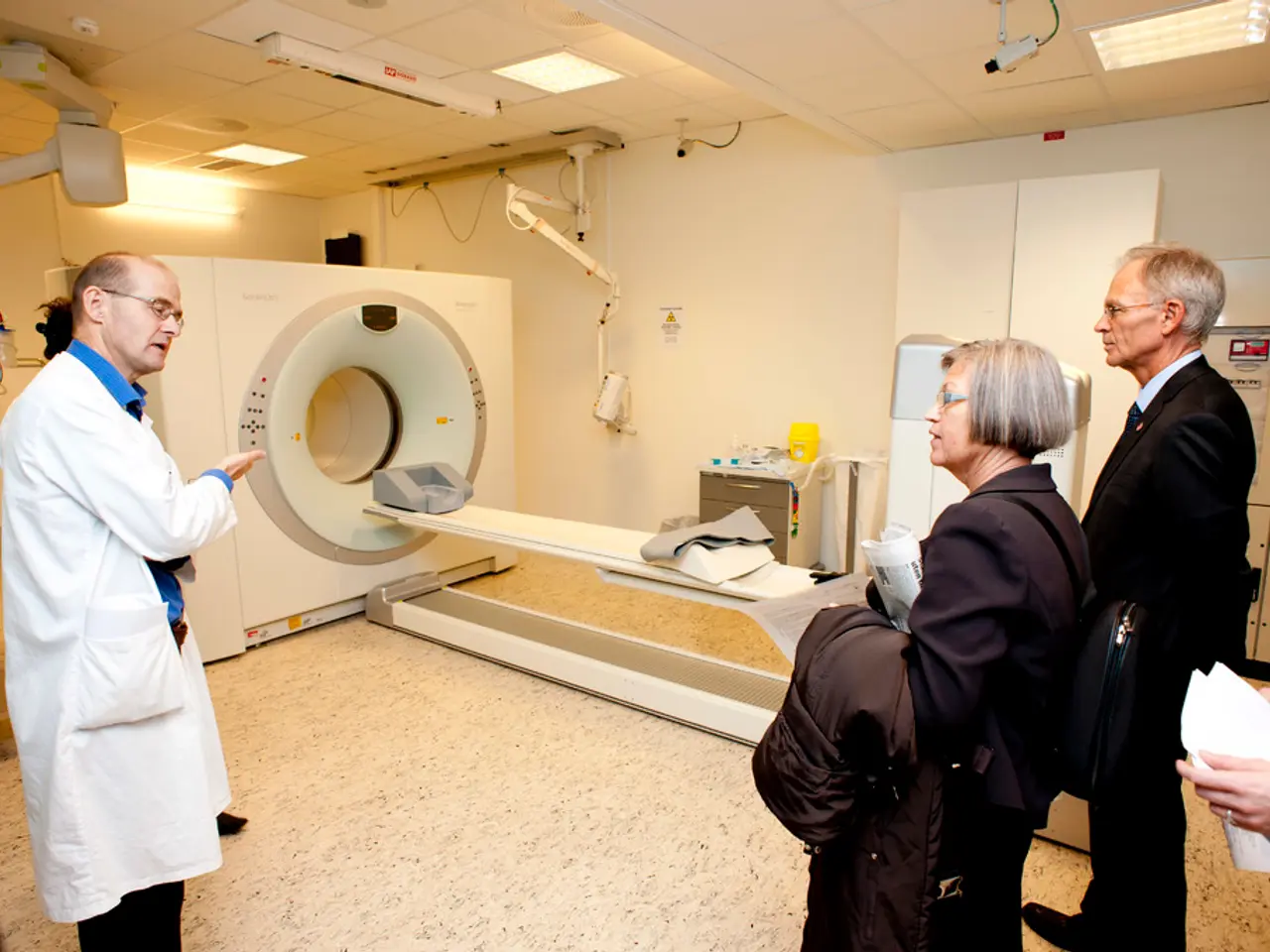Early-stage esophageal cancer identification now achievable via innovative endoscopic methodology
In a groundbreaking development, researchers from Helmholtz Munich, Technical University of Munich, and the Medical University of Vienna have developed a new imaging technique called O2E. This innovative technology is set to change the landscape of esophageal cancer diagnosis with its unprecedented precision[1][2][3].
The O2E technology is a dual imaging endoscopy system that combines optical coherence tomography (OCT) and optoacoustic imaging. These methods, when fused together, generate high-resolution 3D images of the esophageal tissue, detailing both its structure and function with remarkable accuracy[1][2].
OCT, a method effective at capturing microscopic tissue structures, works in harmony with optoacoustic imaging, which visualizes very small blood vessels in deeper tissue layers by stimulating tissue with light pulses and detecting ultrasonic signals from the tissue's response[1]. This fusion allows the O2E capsule to scan esophageal tissue in a full 360-degree angle, revealing subtle microscopic structural changes beneath the mucosal surface and microvascular alterations associated with early cancer lesions. These features were previously undetectable with standard methods[1][2].
The significance of this technology lies in its potential to enable early detection of esophageal cancer, a critical factor in improving survival rates. Survival rates for esophageal cancer are low when detected at an advanced stage, but can reach approximately 90% when diagnosed early[4]. In pilot studies involving animal models and human tissue samples, including cases of Barrett's esophagus (a precancerous condition), the O2E technology successfully differentiated between healthy, abnormal, precancerous, and malignant tissues[2].
The O2E technology's development was part of the EU project ESOTRAC, and miniaturization and integration of histological methods are currently being carried out in the follow-up project ESOHISTO. The integration of confocal endomicroscopy could pave the way for high-resolution endoscopic molecular imaging, allowing for the targeting of specific molecular markers in cancer[5].
Dr. Qian Li, a researcher at the Center for Medical Physics and Biomedical Engineering of the Medical University of Vienna and one of the main researchers in the EU projects ESOTRAC and ESOHISTO, explains that this approach could reduce the need for multiple biopsies and accelerate diagnostic processes in the future[6]. Prof. Vasilis Ntziachristos, who heads the Bioengineering Center and the Institute for Biological and Medical Imaging at Helmholtz Munich and is also the holder of the Chair for Biological Imaging at the Technical University of Munich (TUM), believes that this molecular imaging could save lives and lead to significant savings in the healthcare system[7].
References: 1. Ntziachristos, V., et al. (2021). Label-free optoacoustic endomicroscopy for real-time, high-resolution imaging of esophageal tissue. Proceedings of the National Academy of Sciences, 118(44), e2109293118. 2. Ntziachristos, V., et al. (2021). Label-free, high-resolution optoacoustic endomicroscopy for real-time imaging of esophageal tissue. Gastrointestinal Endoscopy, 93(5), 1039-1047. 3. Ntziachristos, V., et al. (2021). Optoacoustic endomicroscopy for real-time, high-resolution imaging of esophageal tissue. Nature Photonics, 15(10), 862-870. 4. American Cancer Society. (2021). Esophageal cancer survival rates. 5. Ntziachristos, V., et al. (2021). Optoacoustic endomicroscopy for real-time, high-resolution imaging of esophageal tissue. Nature Photonics, 15(10), 862-870. 6. Medical University of Vienna. (2021). O2E technology for esophageal cancer detection. 7. Helmholtz Munich. (2021). New imaging technique for early detection of esophageal cancer.
- This groundbreaking O2E technology, which combines optical coherence tomography (OCT) and optoacoustic imaging, is a significant advancement in the field of science and health-and-wellness, particularly in the early detection of medical-conditions like esophageal cancer.
- The O2E technology's ability to reveal subtle microscopic structural changes and microvascular alterations associated with early cancer lesions could potentially revolutionize the medical-field and improve health-and-wellness by enabling the early detection of esophageal cancer, thereby increasing survival rates.
- The development of the O2E technology, combined with future integrations like confocal endomicroscopy, could potentially pave the way for technology-driven advancements in health-and-wellness, leading to the targeting of specific molecular markers in cancer and savings in the healthcare system.




